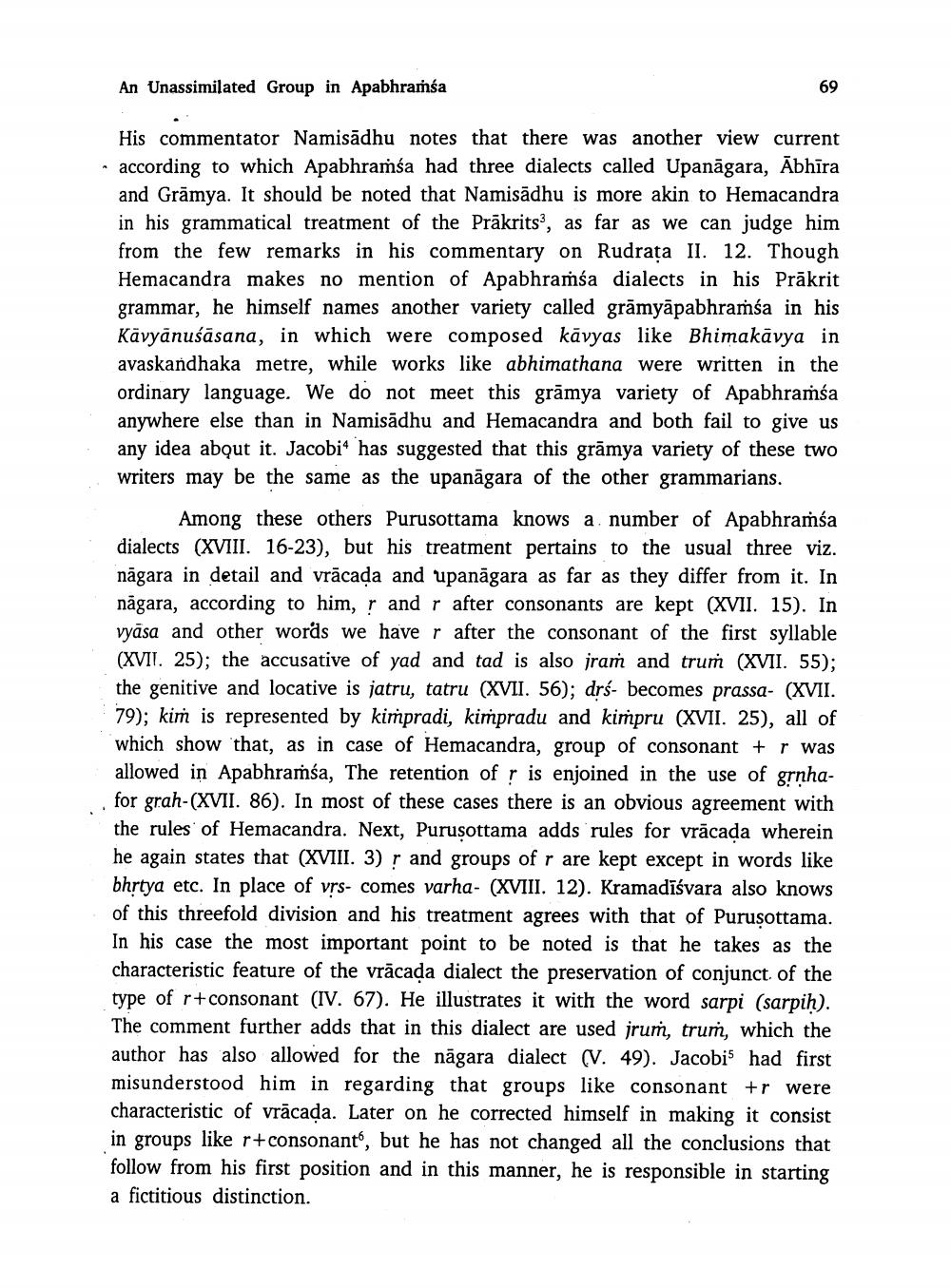________________
An Unassimilated Group in Apabhramsa
69
His commentator Namisādhu notes that there was another view current according to which Apabhramśa had three dialects called Upanāgara, Ābhīra and Grāmya. It should be noted that Namisādhu is more akin to Hemacandra in his grammatical treatment of the Prākrits, as far as we can judge him from the few remarks in his commentary on Rudraţa II. 12. Though Hemacandra makes no mention of Apabhramśa dialects in his Prākrit grammar, he himself names another variety called grāmyāpabhramsa in his Kavyānuśāsana, in which were composed kāvyas like Bhimakāvya in avaskandhaka metre, while works like abhimathana were written in the ordinary language. We do not meet this grāmya variety of Apabhrassa anywhere else than in Namisādhu and Hemacandra and both fail to give us any idea about it. Jacobi* has suggested that this grāmya variety of these two writers may be the same as the upanagara of the other grammarians.
Among these others Purusottama knows a number of Apabhramsa dialects (XVIII. 16-23), but his treatment pertains to the usual three viz. nāgara in detail and vrācada and upanāgara as far as they differ from it. In nagara, according to him, ļ and r after consonants are kept (XVII. 15). In vyāsa and other words we haver after the consonant of the first syllable (XVII. 25); the accusative of yad and tad is also jram and trus (XVII. 55); the genitive and locative is jatru, tatru (XVII. 56); drs- becomes prassa- (XVII. 79); kim is represented by kimpradi, kimpradu and kimpru (XVII. 25), all of which show that, as in case of Hemacandra, group of consonant + r was allowed in Apabhramsa, The retention of r is enjoined in the use of grnhafor grah-(XVII. 86). In most of these cases there is an obvious agreement with the rules of Hemacandra. Next, Purusottama adds rules for vrācada wherein he again states that (XVIII. 3) ? and groups of r are kept except in words like bhrtya etc. In place of vrs- comes varha- (XVIII. 12). Kramadīśvara also knows of this threefold division and his treatment agrees with that of Purusottama. In his case the most important point to be noted is that he takes as the characteristic feature of the vrācada dialect the preservation of conjunct of the type of r+consonant (IV. 67). He illustrates it with the word sarpi (sarpih). The comment further adds that in this dialect are used jrum, trum, which the author has also allowed for the nāgara dialect (V. 49). Jacobis had first misunderstood him in regarding that groups like consonant +r were characteristic of vrācada. Later on he corrected himself in making it consist in groups like r+consonant', but he has not changed all the conclusions that follow from his first position and in this manner, he is responsible in starting a fictitious distinction.




